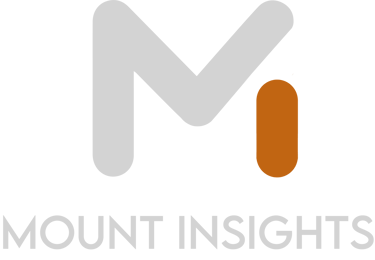
Nerd Alert - Six Sigma Tools for Innovation Acceleration
Michelle Woodyear
Overcoming Roadblocks
As I was developing Module 3 for Legal Marketing Innovation Academy, I kept thinking about all the "stuck" moments I've encountered when trying to solve a problem. You know those times when you're facing a challenge and you just can't see a way forward? That's exactly what these tools are designed to address.
I've been using Six Sigma tools for years, even before I got into legal marketing. As a Six Sigma Black Belt in the oil and gas industry, I applied these techniques to tackle major challenges related to increasing revenue and reducing costs.
One project that really stands out was when I was tasked with understanding why some gas stations were profitable while others weren't. I dove deep into the data, employing heavy statistical analysis like two-sample T-tests and multiple linear regression. What I discovered was truly surprising. It wasn't the price of gas (margins on that are razor-thin), and it wasn't what you might expect - not lottery tickets, food choices, or cigarette sales. The key differentiator was something entirely unexpected. Can you guess what it was? I'll tell you at the end of this post!
This experience really drove home for me how powerful these analytical tools can be in uncovering non-obvious insights that can transform a business. They're all about getting "unstuck" and finding new ways to approach old problems.
The module covers some really potent tools:
Stakeholder Assessment
Root Cause Analysis (the 5 Whys technique)
Fishbone Diagrams
Planning Poker
SIPOC
I know, I know. "Tools? Really? That's what's got you all fired up?" But here's the thing - these aren't just any tools. They're like secret weapons for innovation. I've seen them transform operations across industries, and I'm excited to show legal marketers how to wield them effectively.
What really gets me pumped is seeing how these tools have been used successfully in other industries. For example:
Toyota used Root Cause Analysis to identify and solve manufacturing defects, saving millions in recalls.
Spotify employed the Fishbone Diagram to enhance user experience, leading to a 30% increase in user engagement.
Amazon utilized SIPOC to streamline their supply chain, resulting in faster delivery times and improved customer satisfaction.
Google applied Stakeholder Assessment in their product development process, leading to more user-centric features and increased market share.
Netflix used Planning Poker to prioritize content production, resulting in hit shows that captured massive audiences.
Now, imagine applying these same powerful tools to legal marketing. Throughout the development process, I kept envisioning how participants might use them:
Using Stakeholder Assessment to understand the diverse needs of partners, BD teams, clients, and other stakeholders in marketing projects.
Applying Root Cause Analysis to uncover why proposal win rates are low or why content marketing strategies aren't as effective as they should be.
Creating a Fishbone Diagram to map out all the factors contributing to delayed pitch responses or inconsistent brand messaging across practice groups.
Employing Planning Poker to prioritize marketing initiatives and allocate resources effectively across various projects and practice areas.
Utilizing SIPOC to streamline processes like client alert creation or proposal development.
What I love most about these tools is that they're not just theoretical concepts. They're practical, hands-on instruments that participants can start using right away. The module includes plenty of real-world examples and exercises so everyone can get comfortable applying them to legal marketing challenges.
And for those of you still wondering about gas station profitability....
The key differentiator, surprisingly, turned out to be car wash uptime. To verify our findings, we designed an experiment, dividing the gas stations into two groups - one where nothing changed, and another where we ensured repairmen and spare parts were always on hand. We even advertised our uptime commitment at the pump and in the store. The results were staggering: our hypothesis was confirmed, and when we rolled out the changes to all gas stations, we increased revenue by $6 million in a single quarter.
This experience really drove home for me how powerful these analytical tools can be in uncovering non-obvious insights that can transform a business. From car washes to client pitches, these tools have the power to uncover insights you never knew were hiding in plain sight.
